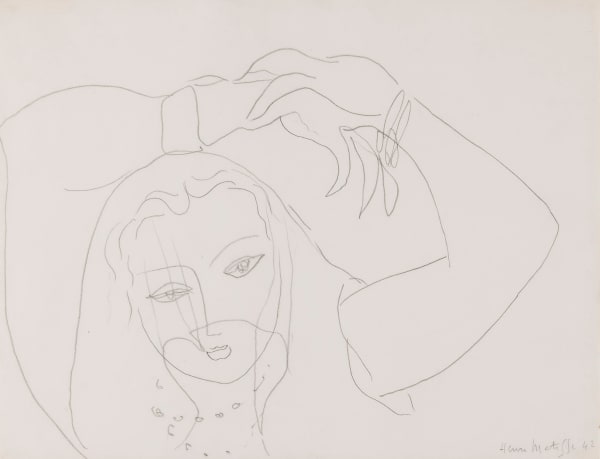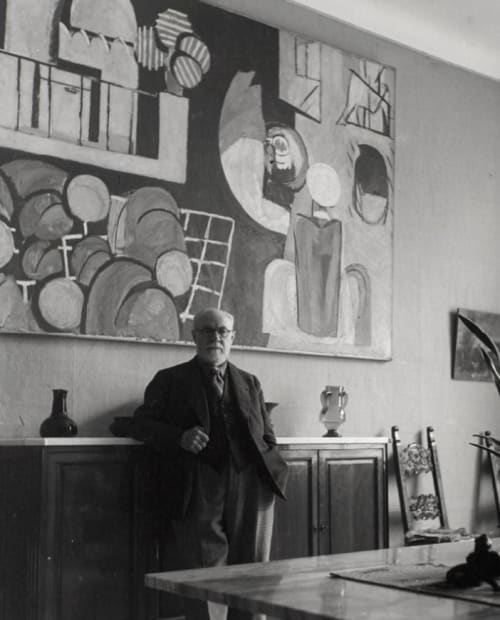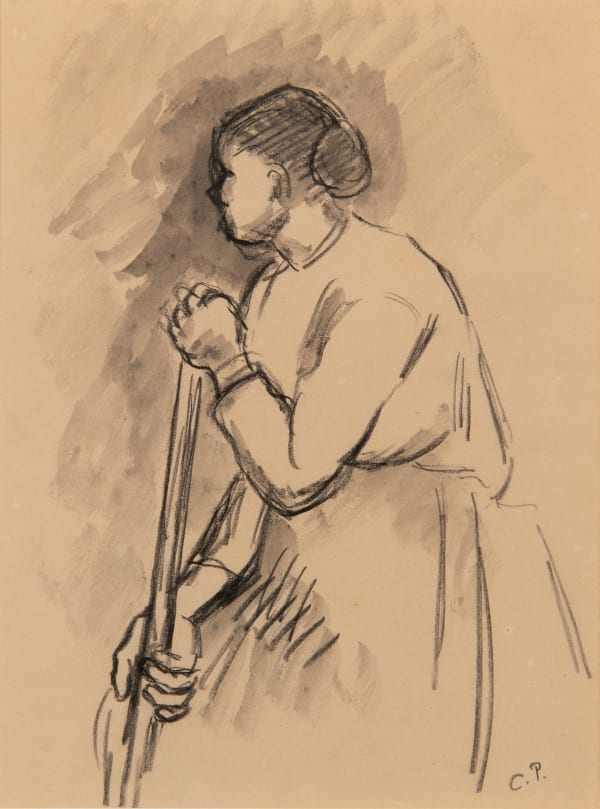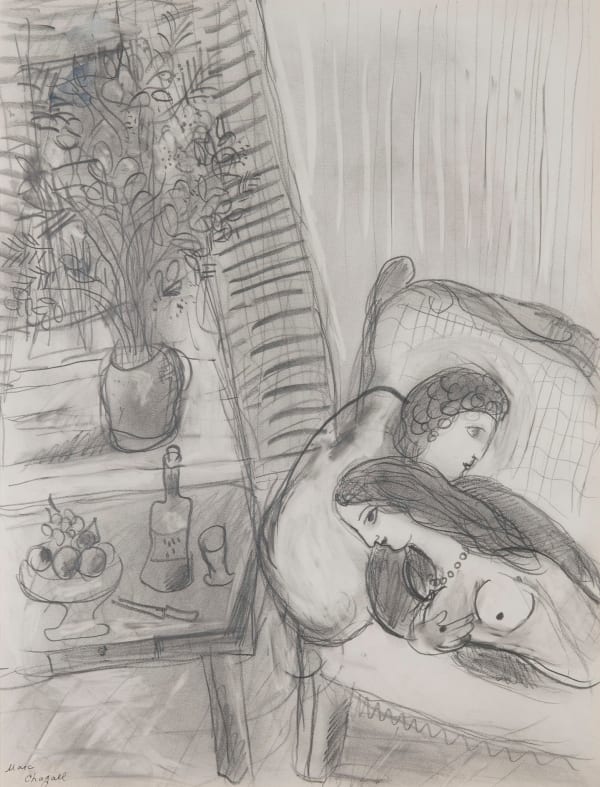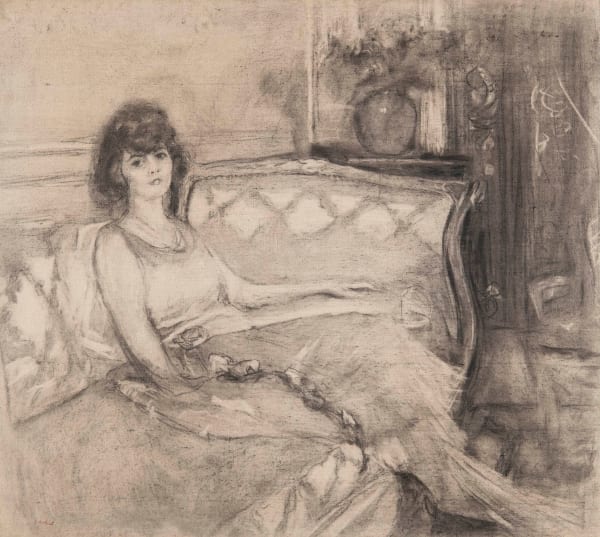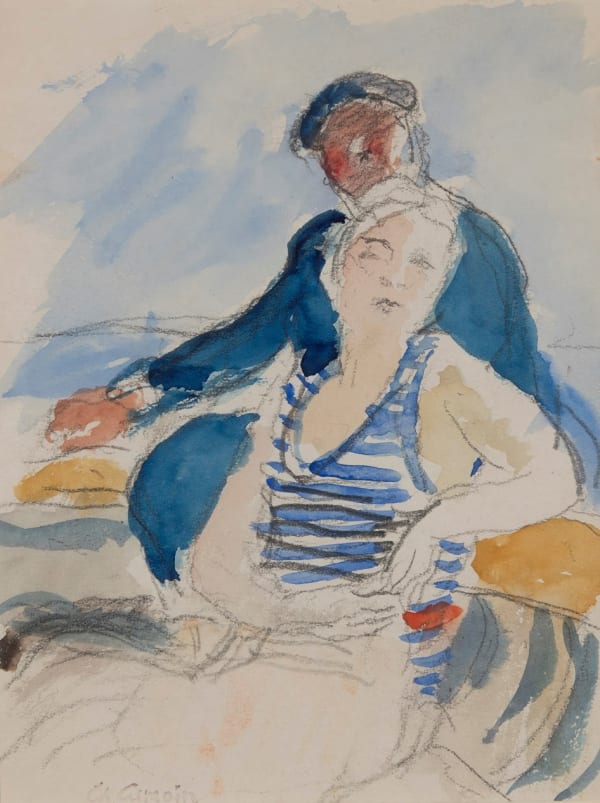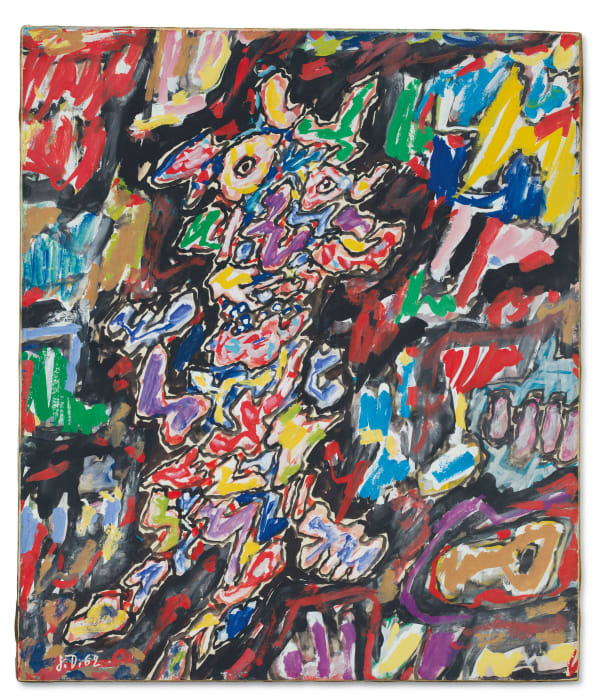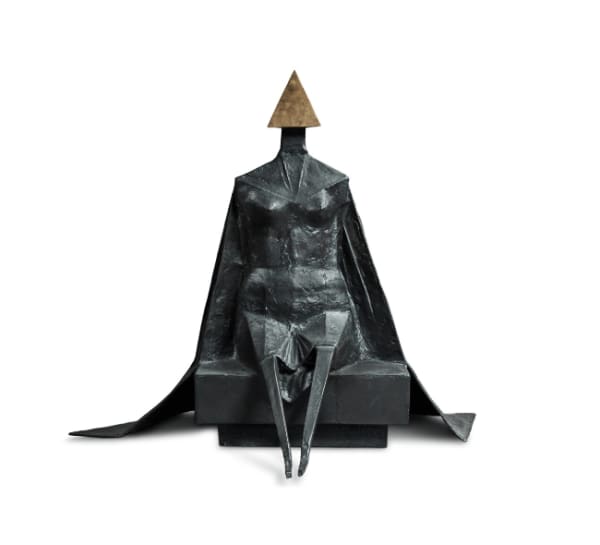-
Connaught Brown is delighted to present our Autumn 2024 exhibition comprised of works by some of the greatest European Modern Masters, including:
Kenneth Armitage, Eugene Boudin, Charles Camoin, Lynn Chadwick, marc Chagall, sonia Delaunay, Jean Dubuffet, Raoul Dufy, fernand Leger, marino Marini, henri Martin, henri Matisse, Jules Pascin, Camille Pissarro, Serge Poliakoff, Walter Sickert and edouard Vuillard.
-

Composition à l’échiquier, 1926, pictured in Cooper's Monaco apartment
-

Collector Theodor Ahrenberg with his wife Ulla, daughter Annette and Pablo Picasso at La Californie, Cannes, in 1959
-
 Matisse in his bedroom at the Hôtel Régina, Nice, 1950, drawing a head
Matisse in his bedroom at the Hôtel Régina, Nice, 1950, drawing a head -
-
Both Eugène Boudin and Camille Pissarro are celebrated for their depictions of the French landscape. Although contemporaries depicting the same coastlines, the artists differed in both their stylistic approaches and subjects.
-
 Eugène Boudin, painting in Trouville, France, 1896
Eugène Boudin, painting in Trouville, France, 1896 -
 Pissarro, Self-Portrait, 1873, Musée d’Orsay, Paris
Pissarro, Self-Portrait, 1873, Musée d’Orsay, Paris -
-
 Marc ChagallLes amoureux sur le divan, 1948-49Pencil and watercolor on paper25 5/8 x 19 5/8 in, 65.1 x 49.8 cmSigned 'Marc Chagall' lower left
Marc ChagallLes amoureux sur le divan, 1948-49Pencil and watercolor on paper25 5/8 x 19 5/8 in, 65.1 x 49.8 cmSigned 'Marc Chagall' lower left -
 Marc ChagallLes Glaïeuls, 1950Gouache, watercolour, pastel and coloured wax crayons on paper25 5/8 x 20 in, 65 x 50.7 cmSigned 'Marc Chagall' lower left
Marc ChagallLes Glaïeuls, 1950Gouache, watercolour, pastel and coloured wax crayons on paper25 5/8 x 20 in, 65 x 50.7 cmSigned 'Marc Chagall' lower left -
 Jules PascinLe Costume de danse, 1928pencil and charcoal on paper18 x 15 1/4 in, 46 x 39 cmSigned and atelier stamped lower right;, inscribed 'L.K.'Sold
Jules PascinLe Costume de danse, 1928pencil and charcoal on paper18 x 15 1/4 in, 46 x 39 cmSigned and atelier stamped lower right;, inscribed 'L.K.'Sold
-
-
Contemporaries in Paris, Walter Sickert and Edouard Vuillard, share an affinity in their artistic language. Both are celebrated for the psychological nature of their paintings, use of the decorative and progressive stylistic approaches.
-
 Postcard from Dieppe, where Sickert lived from 1898 to 1905
Postcard from Dieppe, where Sickert lived from 1898 to 1905 -
-
 Walter SickertThe Street of the Wind, Dieppe, c.1895Oil on canvas19 3/4 x 24 in, 50.2 x 61 cmSigned 'Sickert' lower rightSold
Walter SickertThe Street of the Wind, Dieppe, c.1895Oil on canvas19 3/4 x 24 in, 50.2 x 61 cmSigned 'Sickert' lower rightSold -
 Edouard VuillardÉtude pour Madame Germaine Rosengart (La Parisienne), 1924Charcoal and wash on canvas38 1/4 x 43 in, 97.2 x 109.2 cmStamped with the artist’s signature ‘E. Vuillard’ (Lugt L.2497a) lower left
Edouard VuillardÉtude pour Madame Germaine Rosengart (La Parisienne), 1924Charcoal and wash on canvas38 1/4 x 43 in, 97.2 x 109.2 cmStamped with the artist’s signature ‘E. Vuillard’ (Lugt L.2497a) lower left
-
-
 Members of the Nabis group seated in a garden, Villeneuve sur Yonne
Members of the Nabis group seated in a garden, Villeneuve sur Yonne -
-
 Jean Dubuffet, Personnage et paysage, 1962
Jean Dubuffet, Personnage et paysage, 1962 -
 Serge Poliakoff, Composition, 1959
Serge Poliakoff, Composition, 1959 -
 Jean DubuffetPortrait d’homme, 21 September 1974Pen, crayon and collage on paper12 x 8 1/2 in, 30.5 x 21.5 cmSigned and dated ‘J. D. 74’ lower left
Jean DubuffetPortrait d’homme, 21 September 1974Pen, crayon and collage on paper12 x 8 1/2 in, 30.5 x 21.5 cmSigned and dated ‘J. D. 74’ lower left -
 Lynn Chadwick, First Girl Sitting on Bench, 1988
Lynn Chadwick, First Girl Sitting on Bench, 1988
-
 Kenneth ArmitageFriends Walking, Conceived in 1952Bronze with a green and brown patina
Kenneth ArmitageFriends Walking, Conceived in 1952Bronze with a green and brown patina
Edition of 624 3/4 x 24 1/2 x 4 inSold
63 x 62.5 x 10 cm -
 Lynn ChadwickWinged Figures Version II, 1973Bronze
Lynn ChadwickWinged Figures Version II, 1973Bronze
Conceived and cast in 1973 as number 2 in an edition of 626 1/8 x 22 1/2 x 14 in, 66.4 x 57.1 x 35.6 cmStamped with the artist’s signature, dated and inscribed ‘660 2/6’Sold
-






